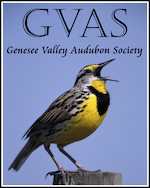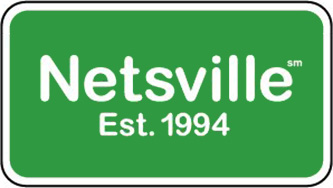Quest Finds Joy at Monomoy
View Larger Map
(Zoom in or out on the map by clicking the small “+†& “-†signs. Move it around by clicking your mouse button and dragging the map in the desired direction. Click the falcon icons for more information about each location.)
Hanging out at the “elbow” of the Cape, Quest has been establishing a clear pattern of behavior. She’s spending the early mornings, and presumably her overnights, in the area around Chatham and Brewster. In a neat coincidence, data for her perch the morning of October 13 placed her at Hawksnest State Park. As we noted in our last update, it looks like she’s occupying her days with jaunts out to Monomoy Island.
Noted as one of the best birding sites in the eastern United States, Monomoy National Wildlife Refuge is a haven for migrating shorebirds, as well as a number of endangered species including the Piping Plover and Roseate Tern. We can only hope that Quest is feeding on the more numerous resident gulls and other migrants, and leaving the rarer residents alone.
Melissa Lowe, Education Coordinator for the Massachusetts Audubon’s Wellfleet Bay Wildlife Sanctuary wrote recently to let us know that Quest has been spotted at Monomoy.
“One of our volunteers, Don Manchester who conducts a spring hawk watch for us, counts migrant raptors in the fall down in Chatham at Morris Island for the USFWS Monomoy NWR. I just learned he has seen Quest on several occasions He has watched her chase and try to catch a flicker ([she] was joined by another falcon in the pursuit).”
Melissa went on to say that Don thought that Quest was “looking quite thin”, but the satellite location data continues to show that she’s moving around daily, so it appears that she’s getting enough food to keep her active. We’re grateful to Melissa and Don for this latest report, and glad to know that Quest is still out there practicing her predator skills!
-Jess



October 17th, 2008 at 6:54 AM
Thank you, Jess – and Melissa and Don – for that update! Is Quest ‘looking thin’ a normal thing at this age/stage in life for a falcon? Should we be concerned at all?
October 17th, 2008 at 7:19 AM
I’m glad she has company with her but maybe her companion is eating all her
food. It’s been known, one catches, the other takes. I think she’ll be fine. Thanks for all the Quest info all you great people watching for her.
October 17th, 2008 at 2:41 PM
I visited with Don today at Morris Island in Chathahm where he conducts the hawk watch for the USFWS/Monomoy NWR. While Don hasn’t seen Quest recently, he did show me a couple photos he took from the previous week. They show Quest carrying a flicker that she had caught! Don watched her eat it — so she is obviously gaining lots of skill out there in Chatham!
October 17th, 2008 at 4:24 PM
For some time now I have been having trouble remembering the colors of the birds bands. Please refresh my memory. Caye
October 17th, 2008 at 7:47 PM
Caye, the band colors are….Quest..blue/Seneca…silver/Susan B..green/Diamante..red/and last but not least Zephyr..yellow.
October 17th, 2008 at 7:49 PM
Thank you for the update on Quest..I too am very concerned about her thinness..is it natural? It could be as Donna says, one catches and the other eats. I hope thats not the case, or that she is sick. Will be waiting for word.
October 19th, 2008 at 3:39 AM
I would guess it is natural for a juvenile falcon to be more thin than fat. Her hunting skills are not as honed as those of her parents and even in the midst of plenty at the bird sanctuary (what a misnomer now;-) those birds are also wary of natural enemies and probably not as easy to catch as (spoiled and lazy) urban prey. The assumption that she is most likely not eating a lot of pigeons out on Monomoy (although I am sure there are some out there – they are everywhere human beings are) makes me think that she is at least probably not sick with that bug young falcons get from eating feral pigeons. (but while looking for the word we used for it, I have found a whole plethora of diseases falcons get from their prey, one called Newcastle Disease is particularly horrible).
October 19th, 2008 at 4:58 PM
Alison-you’re probably thinking of trichomonas AKA frounce. It has affected several greater NYC eyases this year…terrible disease.
As for Quest…a member of the Kfalconcam discussion board, Suzanne & her husband Don-also loyal on-the-ground M&K watchers-were on the Cape recently. They did not see Quest (definitively) but they did meet Don Manchester and saw his photos. I asked their opinion of Quest’s body condition in the photos. This was her reply:
“Ei, Yes, Don Manchester did mention to us that he thought Quest
looked a bit thin. We looked at the photo on which he based that and
didn’t quite see it. Maybe the angle of the pic or maybe the
distortion from the harness?? I was definitely a bit “unhappy” about
his comment, so I REALLY looked at the photo.
Don (my Don) and I talked about DM’s comment afterwards and agreed
that she is obviously flying around and catching prey. We saw the
photo of her with a big flicker in her talons, which, we were told,
she consumed. Suzanne”
So, IMHO, Quest is doing alright…possibly thinner than when Mariah was doing the hunting, but not ill. She is obviously hunting successfully.
October 19th, 2008 at 5:57 PM
Thank you Jess and all! 🙂
Ei, now I really feel better!!! 😀
October 20th, 2008 at 3:11 AM
Thank-you, Ei (which means egg in German, so I always smile when I see it as a nickname on this site). Frounce was what I was looking for. I am also glad that you also looked at the photos and came to the conclusion that Quest is a normal gangly teenager 😉
October 20th, 2008 at 6:49 AM
“a normal gangly teenager” – I like it! 😀 Thank you for the updates!!
October 20th, 2008 at 12:35 PM
Alison-that’s funny about my nickname…I wonder if my Dad knew that when he started using it…his Grandmother spoke German at home, although the children weren’t taught it. 🙂
I just want to clarify-I haven’t actually seen the pictures yet myself, though there are plans to get them posted somewhere at some point. But I absolutely trust Suzanne & Don’s opinion…they watched Quest in person just about every weekend from ledging to heading out on her own, so I’m certain that any significant change would have been readliy apparent to both of them.
October 20th, 2008 at 8:26 PM
Thank you Kathy V. for the information. Caye
October 21st, 2008 at 9:04 PM
I’m no expert, but when I take my bird to the vet for a checkuo, she has to feel his breastbone and weigh him to tell whether he is too thin or too fat. Bird’s apparent shapes change a lot with feather position. I think when an experienced observer says “looked a bit thin” he does not expect that people will take it as a clinical observation. It might also mean ‘thin’ compared to migrants geting ready to fly.
Paul
October 23rd, 2008 at 6:17 AM
When I saw the pictures of Quest posted with the September 23 Imprint I thought at the time she looked thin but attributed it to her losing juvy plumpness and maturing into adult lean muscle.
http://picasaweb.google.com/goshawk227/CapeCodMiscellaneous#5246034692855005634